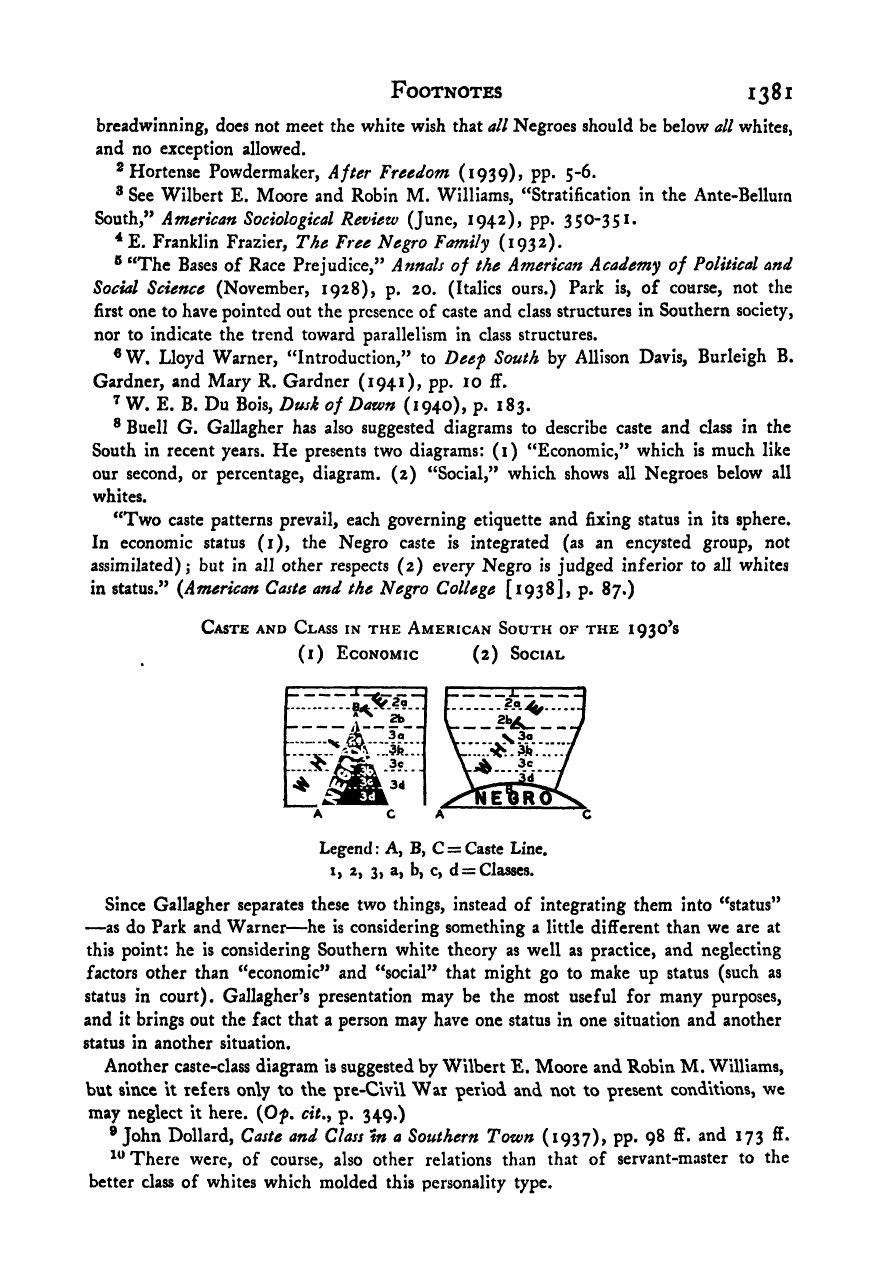Note: Gunnar Myrdal died in 1987, less than 70 years ago. Therefore, this work is protected by copyright, restricting your legal rights to reproduce it. However, you are welcome to view it on screen, as you do now. Read more about copyright.
Full resolution (TIFF) - On this page / på denna sida - Footnotes - Chapter 32

<< prev. page << föreg. sida << >> nästa sida >> next page >>
Below is the raw OCR text
from the above scanned image.
Do you see an error? Proofread the page now!
Här nedan syns maskintolkade texten från faksimilbilden ovan.
Ser du något fel? Korrekturläs sidan nu!
This page has never been proofread. / Denna sida har aldrig korrekturlästs.
Footnotes 1381
breadwinning, does not meet the white wish that all Negroes should be below all whites,
and no exception allowed.
^ Hortense Powdermaker, After Freedom (1939), pp. 5-6.
® See Wilbert E. Moore and Robin M. Williams, “Stratification in the Ante-Bellum
South,” American Sociological Review (June, 1942), pp, 350-35 1.
^ E. Franklin Frazier, The Free Negro Family (1932).
® “The Bases of Race Prejudice,” Annals of the American Academy of Political and
Social Science (November, 1928), p. 20. (Italics ours.) Park is, of course, not the
first one to have pointed out the presence of caste and class structures in Southern society,
nor to indicate the trend toward parallelism in class structures.
^W, Lloyd Warner, “Introduction,” to Deef South by Allison Davis, Burleigh B.
Gardner, and Mary R. Gardner (1941), pp. 10 fF.
W. E. B. Du Bois, Dusk of Dawn (1940), p. 183.
® Buell G. Gallagher has also suggested diagrams to describe caste and class in the
South in recent years. He presents two diagrams: (i) “Economic,” which is much like
our second, or percentage, diagram. (2) “Social,” which shows all Negroes below all
whites.
“Two caste patterns prevail, each governing etiquette and fixing status in its sphere.
In economic status (i), the Negro caste is integrated (as an encysted group, not
assimilated); but in all other respects (2) every Negro is judged inferior to all whites
in status.” (American Caste and the Negro College [1938], p. 87.)
Caste and Class in the American South of the 1930^8
(i) Economic (2) Social
Legend : A, B, C = Caste Line,
1, 2, 3, a, b, c, d = Classes.
Since Gallagher separates these two things, instead of integrating them into “status”
—as do Park and Warner—he is considering something a little different than we are at
this point: he is considering Southern white theory as well as practice, and neglecting
factors other than “economic” and “social” that might go to make up status (such as
status in court). Gallagher’s presentation may be the most useful for many purposes,
and it brings out the fact that a person may have one status in one situation and another
status in another situation.
Another caste-class diagram is suggested by Wilbert E, Moore and Robin M. Williams,
but since it refers only to the pre-Civ\l War period and not to present conditions, we
may neglect it here. (0/>. p. 349.)
® John Dollard, Caste and Class tn a Southern Town (1937), pp. 98 ff. and 173 ff.
There were, of course, also other relations than that of servant-master to the
better class of whites which molded this personality type.
<< prev. page << föreg. sida << >> nästa sida >> next page >>